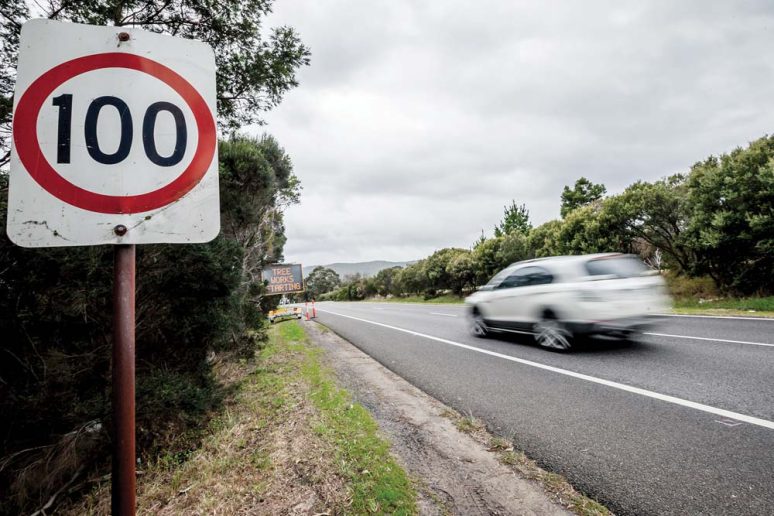MEMBERS of the Australian Wildlife Protection Council are today (Tuesday 29 May) planning to visit the site of proposed vegetation clearing by VicRoads on the Mornington Peninsula Freeway.
The inspection follows a meeting between the groups over treatment of animals displaced by the contentious median-strip clearing which had conservationists and animal carers up in arms (“Plea to end ‘cruel’ freeway clearing” The News 14/5/18).
VicRoads and the wildlife protection council are at odds over the methods used to remove the vegetation and the capabilities of the tree removalists and animal habitat managers contracted for the work, which is expected to start this week.
Even the need for the wholesale clearing of the vegetation is in dispute, with the wildlife protection council arguing that the installation of wire-rope barriers, which prompted the clearing, had been discontinued in several European countries.
Australian Wildlife Protection Council secretary Eve Kelly refuted a comment by VicRoads that “the AWPC have confidence in the fauna detection and handling process outlined by [the contractors]”.
Ms Kelly said: “It has been our experience that it has taken much effort to ensure actions are completed and followed through for this project. It would, therefore, be presumptuous for anyone at VicRoads to say the AWPC have confidence in the vegetation removal along the freeway.
“We have had some concerning feedback about the way in which these contractors conduct their work on other projects.”
After meeting the contractors earlier this month Ms Kelly said she feared for the safety of displaced animals: “This habitat is abundant with ringtails and, while the forestry machine is not being used, heavy machinery still is, such as a large excavator with claw and bucket, Bobcat, chain saws, elevated work platform for large trees, wood chipper and temporary fencing. This machinery will create [lots of noise] and disturb wildlife.”
VicRoads admitted in its action plan that stage one of the project “resulted in the disturbance of animals at a rate higher than expected and the project was suspended”.
Learning from errors made in the first stage, VicRoads said “fauna salvage and release protocols had been developed to provide assistance and guidance to VicRoads staff and contractors during the removal of vegetation along the freeway”.
“The measures outlined in the action plan have been developed to, where possible, avoid harm to fauna residing within the vegetation to be removed during clearing works and include recommendations identified during stage one of vegetation removal.
“This action plan also aims to reduce risk to motorists during vegetation removal. [It] has been prepared with consultation and input from local stakeholders who will be impacted by the removal of vegetation such as local wildlife carers, vets and wildlife protection groups.”
Ms Kelly said VicRoads “still have a long way to go in proving themselves in wildlife protection”.
The group said the VicRoads Biodiversity Strategy and Tree strategy which it said “should be enough to stop [it] making the criminal mistake of mulching wildlife alive and expecting dedicated volunteers to clean up the mess they have created”.
First published in the Southern Peninsula News – 29 May 2018


